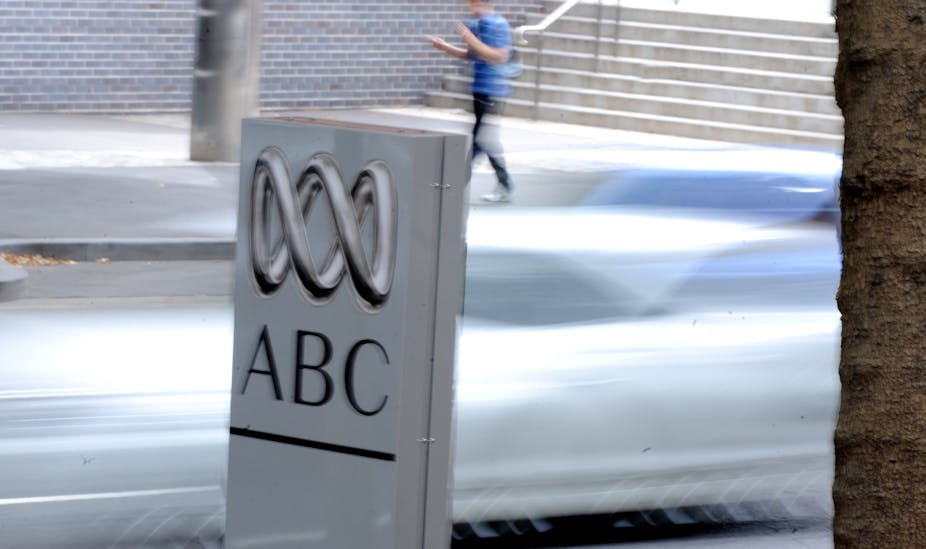It’s tempting to view The Australian’s latest broadside at the ABC as just another salvo fired between our nation’s two biggest media organisations.
But the coverage, based on an Institute of Public Affairs (IPA) report analysing the ABC’s coverage of energy issues, also serves as a fascinating case study of how we should define bias in environmental journalism.
The IPA is a think-tank broadly identified with the most conservative elements of the public policy debate, and its findings were given prominent coverage in The Australian.
Titled “Public broadcaster or green activist? How the ABC spins Australia’s energy choices”, the report argued that the ABC was more favourable in its reporting of renewable energy resources than of coal mining and coal seam gas (CSG).
It’s worth noting that the numbers could have been spun differently. For example, according to the IPA’s figures, the ABC’s coverage was either “neutral” or “favourable” in the majority of its stories on coal mining and CSG: 68.3% for coal mining, and 56.4% for CSG.

Yet the next day, The Australian followed up with an editorial by the report’s author James Paterson, in which he called for the ABC to be privatised so that its journalists’ alleged personal preferences can be curtailed by the “commercial imperative to seek advertising”. As arguments go, claiming that journalism will be improved by trying to appease advertisers certainly wins points for novelty.
Bias in the eye of the beholder
The problem with calling out bias is that doing so often reveals more about one’s own preferences; if you doubt this, have a look at any newspaper’s letters page.
The irony of a conservative and influential organisation like the IPA being given space in the nation’s most prestigious newspaper to attack the ABC and defend fossil fuels is evidently lost on Paterson. Let’s not forget that The Australian has itself been the subject of similar accusations.
Investigative journalist Wendy Bacon’s research has suggested that mainstream newspapers in general, and The Australian in particular, have shown a bias towards climate scepticism. These findings did not make such a favourable appearance in the pages of The Australian.
The flaw in Paterson’s accusation of ABC bias is that he conflates media “framing” of an issue with the wider question of how to cover stories properly. As the influential New York University journalism professor Jay Rosen blogged this week, journalists who slavishly strive for “balance” are doing the public a disservice by walking a line between two sides instead of attempting to find out who is right. Simply tallying up stories that are “pro” or “anti” on a given issue is nothing more than a useful starting point, and doesn’t explain the broader context of that reporting.
The ABC’s framing of issues is about much more than “lefty journalists” being given free reign at our nation’s public broadcaster. (As an aside, the ABC is consistently rated as Australia’s most trusted media outlet.)
Neither is it simply a question of whether journalists are beholden to the views of their bosses, although the IPA and The Australian illustrate this issue almost poetically.
Beware false balance
In the IPA’s rush to promote its ideology of small government and the rectitude of the market, it actually missed some far more crucial and interesting questions about responsible environmental journalism.
For example, in an era of climate change and fossil fuel depletion, is it biased journalism to report favourably on renewable resources and to cast coal mining as a potential negative? Or is it just common sense?
If good journalism is partly about holding a mirror up to society – and that society shows broad support for renewable energy – is it biased journalism to reflect this?
And when the evidence for human-caused climate change is inarguable and governments around the world are calling for action, is it “objective journalism” to demand that the few who still reject the science get an equal hearing?
Good journalism and the bigger picture
On one measure though, the IPA report makes an important, if unintended, point. The report accuses the ABC of framing coal seam gas and coal mining as bad for the environment, while failing to take account of their economic benefits.
The report outlines the relative costs of black coal, brown coal, gas, wind, solar and hydroelectric power. The non-renewable options are, of course, the cheapest.

Paterson then asserts that journalists need to decide whether to frame their stories based on economic or environmental effects, as though these two considerations cannot possibly co-exist and the only option is to support one or the other.
The better strategy is to consider both. In this case, that means acknowledging the effects of fossil fuels on the climate, while also reporting the economic costs of moving to renewable resources.
All journalism and media, regardless of their ownership structures and public or commercial status, have an obligation to the Australian public to provide reliable information so that, as a nation, we can debate how best to secure a positive environmental and economic future.

